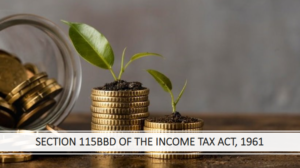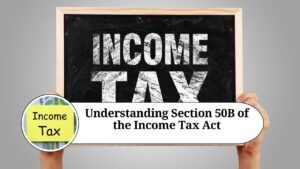Regular assessment is a crucial concept in Indian income tax law, defined under Section 2(40) of the Income Tax Act. This blog explores its meaning, legislative history, and relevance, providing a comprehensive guide to understanding this critical provision.
What is Regular Assessment?
The term “regular assessment,” as defined in Section 2(40), refers to assessments made under:
- Section 143(3): Scrutiny assessment.
- Section 144: Best judgment assessment.
This definition ensures clarity regarding the nature of assessments considered “regular” under the Income Tax Act.

Evolution of Section 2(40)
Amendments by the Finance Act, 1990
The Finance Act, 1990, retrospectively amended Section 2(40) effective from April 1, 1989, to resolve ambiguities arising from earlier legislative changes.
Key Changes Introduced
- Pre-1989: The term “regular assessment” included all assessments under Section 143 (both subsections 1 and 3) and Section 144.
- Post-1989:
- Section 143 was restructured. Subsection (1) now only involved processing returns, while subsection (3) focused on making assessments.
- To remove confusion, the amendment clarified that only assessments under Section 143(3) or Section 144 qualify as “regular assessments.”
Departmental Circular No. 572 (Dated 3-8-1990)
The circular explained that the new definition excludes the mere processing of returns under Section 143(1) from the ambit of regular assessment.
Regular Assessment and Section 147
Section 147 deals with income escaping assessment, and its relation to “regular assessment” has been a subject of judicial scrutiny.
Supreme Court’s View
- In K. Govindan & Sons v. CIT (2001) 247 ITR 192, the Supreme Court clarified:
- An initial assessment under Section 147 is a “regular assessment.”
- However, a reassessment or revised assessment under Section 147, where an assessment has already been made, does not qualify as “regular assessment.”
Other Judicial Interpretations
- CIT v. R.K. Jain: Reinforced the distinction between first-time assessments and reassessments.
- CIT v. D.S. Batra: Highlighted that reassessments under Section 147 are separate from regular assessments under Section 2(40).
Other Relevant Provisions
Several provisions in the Income Tax Act are linked to the concept of “regular assessment”:
Self-Assessment [Section 140A(2)]
Tax payable after considering self-assessment is impacted by the definition of regular assessment.
Assessment Provisions [Sections 143 and 144]
- Section 143(3): Scrutiny assessments fall under regular assessment.
- Section 144: Best judgment assessments are also included.
Deduction and Advance Payment [Section 190(1)]
Tax deducted at source (TDS) and advance tax payments relate closely to regular assessments.
Interest and Penalty Provisions
- Section 234A: Interest for delays in filing returns.
- Section 234B: Interest for defaults in advance tax payments.
- Section 234D: Interest on excess refunds.
- Section 244A(1)(aa): Interest on delayed refunds.
- Section 276CC: Penalties for non-filing of returns.
Why Understanding Regular Assessment Matters?
Knowing the scope of regular assessment under Section 2(40) is vital for:
- Tax Compliance: Ensuring accurate filing of returns to avoid penalties.
- Refunds and Interest: Claiming legitimate refunds or addressing interest liabilities under Sections 234A, 234B, or 244A.
- Litigation: Recognizing when assessments qualify as “regular,” especially during disputes or appeals.
FAQs on Regular Assessment
Q1: What is the difference between regular assessment and reassessment?
Regular assessment refers to initial assessments under Section 143(3) or Section 144, while reassessment under Section 147 is conducted when income has escaped assessment.
Q2: Does the processing of returns under Section 143(1) qualify as regular assessment?
No. After the 1989 amendment, only assessments under Section 143(3) or Section 144 are considered “regular assessments.”
Q3: Can reassessments under Section 147 be treated as regular assessments?
Reassessments under Section 147 are not considered regular assessments if an earlier assessment was already made. However, an initial assessment under Section 147 qualifies as a regular assessment.
Q4: How does regular assessment impact advance tax and TDS?
Advance tax and TDS calculations depend on the tax liability determined during a regular assessment.
Conclusion
The definition of “regular assessment” under Section 2(40) provides clarity about the types of assessments included in its scope. By excluding mere processing of returns under Section 143(1), the amendment ensures that only substantive assessments under Sections 143(3) and 144 qualify. Understanding this concept is essential for taxpayers to comply with tax laws, handle disputes, and manage tax liabilities effectively.
For more insights on taxation and compliance, visit SmartTaxSaver.



